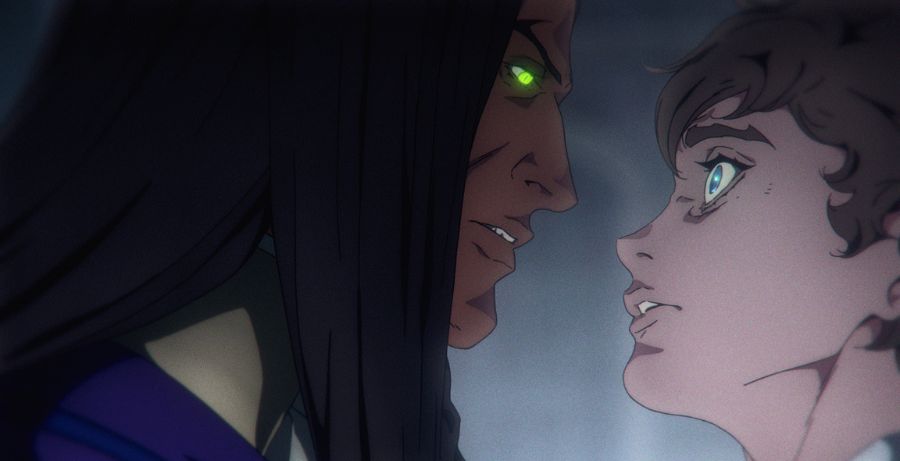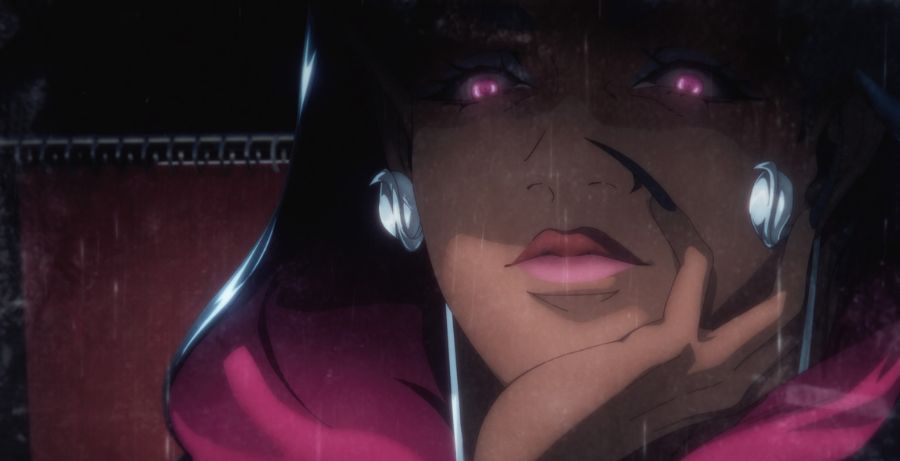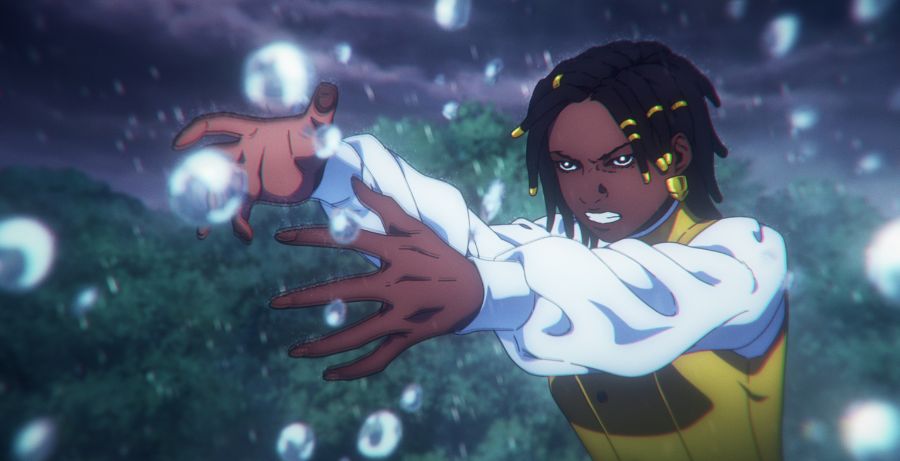Castlevania: Nocturne is the sequel series to Netflix’s Castlevania. Animated by Powerhouse Animation, this sequel series takes place centuries after the events of Dracula and the adventures of everyone’s favorite throuple—I mean trio—Alucard, Trevor Belmont, and Sypha Belnades. Gearing up for the new season’s release on September 28th, Netflix dropped an early screening of Castlevania: Nocturne Episodes 1 through 3 as a premiere for DROP-01, a Netflix genre animation showcase.
For those who tuned in, it promises action, emotion, and more of the beautiful characters and animation that fans have come to expect from the creative team that gave us Alucard’s long, long eyelashes. The series is produced by Powerhouse Animation, directed by Sam Deats & Adam Deats, and written by Clive Bradley, Zodwa Nyoni, Testament, and Temi Oh and excutively produced by Clive Bradley, Kevin Kolde, Fred Seibert, and Adi Shankar.
Set at the height of the French Revolution, the series takes inspiration from Castlevania: Symphony of the Night and Rondo of Blood (as well as other games in the series). The story primarily happens in a remote part of western France, the counter-revolutionary aristocracy having forged an alliance with a terrifying Vampire Messiah, who promises to ‘eat the sun’ and unleash an army of vampires and nightcreatures to crush the revolution and enslave humanity both in France and the New World. Annette (Thuso Mbedu), a sorceress from the Caribbean, seeks out Richter Belmont (Edward Bluemel), the last descendant of Trevor Belmont and the long-fabled family of vampire hunters, to lead the resistance against the Messiah.

In Castlevania: Nocturne Episode 1, we’re immediately introduced to baby Belmont and the trauma he endured as a child. With a stellar fight featuring his mother Julia Belmont (Sophie Skelton) who wields both the Vampire Killer whip of the Balmonts and the Speaker powers passed down by Sypha, she’s a force. Only, her opponent is stronger.
If this episode is anything to judge the rest of the series by, well, we’re in for a treat. With stellar and brutal action that wreaks emotional havok on its main character Richter, it’s clear that the series is still well within the animated world that began in 2017 but also decidedly different. Instead of a Belmont scarred by the world and hardened through it, we see a young Richter Belmont (Benjamin Plessala), his trauma, and the ways in which he was able to find a loving family in a relatively uneventful town. He’s able to carry himself with confidence and strength but given his age, it’s clear that there are miles to go before he becomes Belmont in the sense of the name that we know it to be—especially when flashbacks to his mother’s death come into play.
Castlevania: Nocturne Episode 1 also sows the seeds of revolution as we see Maria Renard (Pixie Davies), Richter’s cousin, leading a revolutionary meeting and mapping out the setting for the story. Here, we also get to see her Speaker powers, as well as Richter in action for the first time. And most importantly, unlike Julia, he doesn’t use magic, instead relying solely on Vampire Killer.

This premiere episode of the new series also takes time to step away from the action and build up a vision of the vampire aristocracy, the church and it’s Abbot (Richard Dormer), and how both stand against the revolution and the people of France. With a runtime of only around 25 minutes, a lot is packed into it, setting the stage for nearly every character we know is coming, whether that’s discussing the Vampire Messiah or the initial introduction of Annette and Edouard (Sydney James Harcourt).
Castlevania: Nocturne Episode 1 introduces us to a host of characters, and while Richter’s aunt and cousin Tera (Nastassja Kinski) and Maria Renard stand out, they don’t steal the show. The truth is, the most striking character we see is Olrox (Zahn McClarnon). You know, the man who killed Richtor’s mother and promised to kill him in the future.
A beauty of a vampire, Olrox, is more than just a boss to clear. He’s a 250-year-old vampire whose shadow will hang over the story to come. He’s striking. The emotional devastation delivered in his small number of lines to Richter is delivered with so much gravitas that it’s clear the series maintains its care for its villains as much as its heroes. Keeping the purple clothing that we see in Castlevania: Symphony of the Night, we also get the chance to see his true form. Instead of it being some anthropomorphic reptile, it’s a winged serpent clearly inspired by the Aztec Quetzalcoatl or the Mayan Kukulkán, one of the most exciting moments of the Castlevania: Nocturne Premiere.

As for Castlevania: Nocturne Episode 2, audiences got the chance to see more fo the villainy that awaits during the series, with the Church pushing back against equality and working as an arm to uphold subjugation. But the church is not the most interesting part of the villains, that honor belongs to Drolta.
With a ferocious entrance, dispatching soldiers, Drolta is able to highlight the danger that is coming to the series. A follower of the Vampire Messiah, Drolta is fascinating in her beauty and brutality. When you add in that those who serve the Vampire Messiah are also upholding slavery in Saint Dominique and throughout the world, the vampires take on a new form of evil.
But it’s through Tera, Richter’s aunt, that we find out the fear that the Vampire Messiah has as she retells the reason why she left Russia with Drolta and the Messiah at her back. With the reveal that the Vampire Messiah is the brutal Erzsébet Bathory. The big impending bad of the season, Tera’s recount, sets the stage for the grief and death that Bathory leaves in her wake.
As for the third episode of the Castlevania: Nocturne Premiere, well this it’s all about Annette. Moved sharply from the love interest footnote that she is in Rondo of Blood, Annette is a sorceress. Using spells, she is the embodiment of the orisha Ogun, the god of war and steel. She is able to manipulate the metal in the Earth and use forged metal to create weapons, primarily two blades that she both wields in hand-to-hand combat and sends flying like Alucard did in the original series with his blade.

Annette’s power is that of a god and in Episode 3, the audience learns about her resiliency, her trauma, and ultimately how she has grown to not be defined by her past. With her former slavemaster at home in the French vampire aristocracy, her fight against Bathory is even more personal. Like Richter’s relationship with Olrox, Annette’s visceral reaction to seeing Verblanc in Episode 2 is pulled into perspective in Castlevania Episode 3 as the audience sees the horror he put her through and the will it took to escape.
The inclusion of the Haitian revolution as a part of the setting of the series is one that speaks to the importance of history as the two revolutions were connected. The choice includes them both instead of sidestepping issues of race, which is often the case in fantasy series is one that has emotional resonance and importance. In many ways, it’s also an extension of the thoughtful storytelling we saw in Isaac’s journey throughout the original series. Only instead of an antagonist Annette stands against the vampires, not with them.
The stage is set after the Castlevania: Nocturne Premiere to expand on the foundation built with the original Castlevania series just with episode 1. Action, emotion, and a little boy, Belmont, are all waiting for us as we head into the full season this week.
Castlevania: Nocturne is streaming exclusively on Netflix.
Castlevania: Nocturne | First 7 Minutes | Netflix
Our story begins: baby Richter meets Olrox. This clip represents the Cold Open of Castlevania: Nocturne – premieres September 28, only on Netflix. ABOUT CASTLEVANIA: NOCTURNE New series focusing on Richter Belmont origin story feat. vampires in the French Revolution. The gory and gothic adventures of the Castlevania franchise continue with an exciting new setting and their highest stakes yet.







